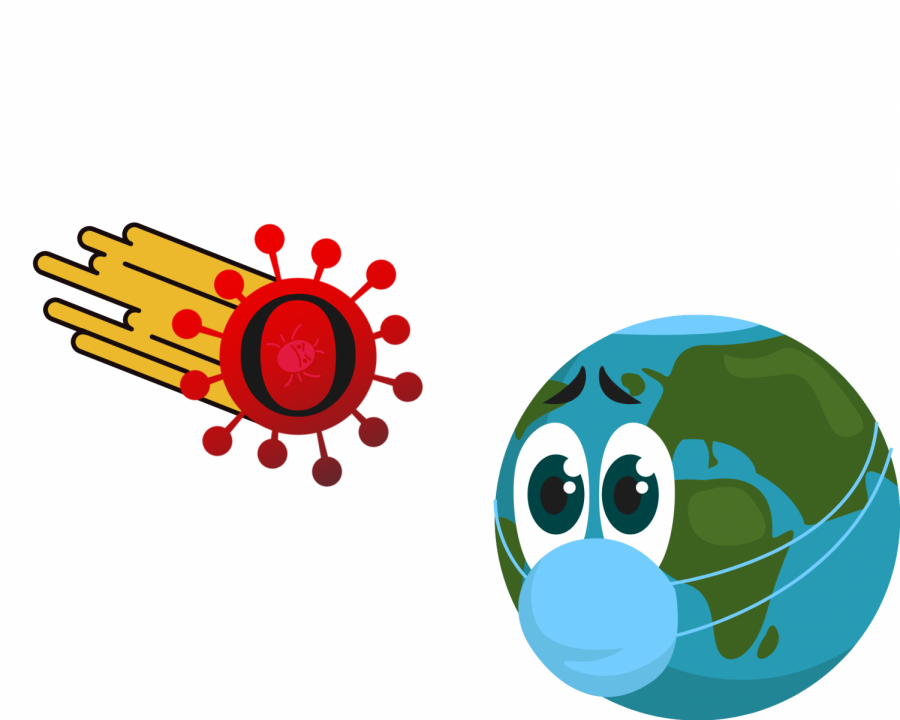
Kushi Maridu
The Omicron variant threatens to be two times more transmissible than the Delta variant.
Although COVID emerged in December 2019, the pandemic has been ongoing due to mutations that make the virus stronger. The Delta variant first emerged as a variant of concern in December 2020 and is the most prominent variant right now. Another potentially more dangerous variant emerged in late November 2021.
Scientists have named it the Omicron variant.
The Omicron variant first appeared in Botswana and South Africa. The first thing that the scientists noticed about this variant was that it had a lot more mutations than a typical variant. After seeing how the Delta variant quickly became the most dominant strain, scientists immediately deemed it a variant of concern and stated that this variant poses a “very high” global risk.
Scientists have said that these mutations will make this variant less susceptible to vaccines and more transmissible among humans. In South Africa, where Omicron is the dominant strain, Omicron has been reinfecting people that had already been previously infected. Researchers also found that it has been spreading twice as fast as the Delta variant.
However, it is too early to say how deadly this new variant is. Biology teacher Craig Parker explains why these mutations occur.
“Mutations often arise during viral replication. The more a virus replicates, the greater the likelihood that mutations will occur. This is especially true of RNA viruses like SARS CoV-2. It’s too soon to say for sure, but early reports are that this variant, while more contagious, is largely causing mild cases,” Parker explained.
So far, the Omicron variant has spread to every continent except Antarctica. Some Omicron cases have started popping up in the United States as well.
Multiple states have confirmed cases, and scientists are predicting a lot more cases to follow similarly to how Delta took over the US in less than two months.
Most schools in the US have returned to normal learning conditions by deeming masks optional, and scientists are hopeful that the approval of the Pfizer vaccine for school aged children will help to reduce the the virus’ winter spread. However, this new Omicron variant threatens to change that.
Although it is too early to say how Omicron will affect schools, Principal Darren Erickson has some predictions for how this will play out.
“We work with not only the school board, but with Scott County Health and the state of Iowa. Right now, regarding what potential changes there are, there is still the state mandate in place that Governor Reynolds signed last year that does allow schools to have mask mandates. As of right now, there is also no student vaccination mandate. If something were to change and our local rate were to get really high, would the state consider loosening current regulations? That’s a possibility considering how bad the situation gets,” Erickson shared.
Masks might be made mandatory again, which angers many students who prefer not to wear them. If the situation becomes worse, we might switch to a hybrid-learning model or, even, an all-online model.
Current vaccines don’t prove to be as effective against this variant but there is hope. Booster vaccines have already started rolling out, and those 18 or older are eligible to get them. This may help slow down the spread of the virus.
“We just don’t know for sure yet. It looks like our existing vaccines are not as effective against Omicron as they are against other variants. However, there is also evidence that boosters may increase the level of protection,” Parker said.
Omicron-specific boosters have already started development in big pharmaceutical companies such as Pfizer, Moderna and Johnson & Johnson. These boosters might be in demand depending on how much of a threat this variant poses.
It’s too early to say how Omicron will affect the global future but it is important to stay safe as a community.
“We recommend students to wear masks in big crowds. We recommend people get their vaccinations as long as they’re eligible. Practicing social distancing and washing your hands also help against the virus. We recommend students and staff take as many safety precautions as they can for their individual needs to do our part to keep our community safe,” Erickson recommended.
There is still hope with little steps like the ones Erickson recommended. These steps will keep the virus at bay and help our country prosper again.
